This is a fascinating, terrifying, moving, and exalting account of a truly great beings success in rising above adversity and making an outstanding contribution to a part of humanity under extreme pressure. I warmly recommend it to anyone who might like to discover a magnificent chest of treasures.
Robert Thurman, author, with the Dalai Lama, of Infinite Life
Chetsang Rinpoche is one of the biggest incarnate lamas, head of a tradition, but also, he experienced the life of an ordinary American. This is unlike any other biographyone sees how a neighborhood boy can become a great spiritual master.
Gelek Rimpoche, author of Good Life, Good Death
ABOUT THE BOOK
The story of Drikung Chetsang Rinpoches life, notes the Dalai Lama, encompasses a remarkably broad range of Tibetan experience over the past fifty years. This is the story of a young boy, born in 1946 to inherit the role of high-ranking lama. When the Chinese army invaded, his family escaped the country, but he and the other monks in his monastery were rounded up by soldiers and sent to an indoctrination school.
After surviving almost two decades of the Cultural Revolution in Tibet, during which time lamas and aristocrats were persecuted and jailed, Chetsang Rinpoche walked out of Tibet alone and found his way to Kathmandu, Nepal. Eventually, after living as a refugee and an immigrant, he fully took on leadership of the Drikung lineage by founding the Drikung Kagyu Institute in India. Since then the teachings of this lineage have spread around the world after nearly being lost.
HIS HOLINESS THE DALAI LAMA, Tenzin Gyatso, was born in 1935 in the province of Amdo in eastern Tibet. When he was two years old he was recognized as the fourteenth in the line of Dalai Lamas, the spiritual masters who for three centuries had governed the country. After China invaded Tibet, the Dalai Lama took refuge in Northern India, where he has led and inspired the Tibetan community in exile.
ELMAR R. GRUBER, PhD, was born in Vienna, Austria, in 1955. He is a psychologist, an independent scholar and freelance popular-science writer, as well as a scientific advisor for radio and television in Europe. He is the author of twenty books that have been published in fifteen languages throughout the world. A longtime practitioner of Tibetan Buddhism, he is a student of Drikung Chetsang Rinpoche.
Sign up to learn more about our books and receive special offers from Shambhala Publications.

Or visit us online to sign up at shambhala.com/eshambhala.
FROM THE
HEART
 OF
OF 
TIBET
The Biography of Drikung Chetsang Rinpoche,
the Holder of the Drikung Kagyu Lineage
E LMAR R. G RUBER
Forewords by the Fourteenth Dalai Lama,
the Gyalwang Drukpa, and Garchen Rinpoche

S HAMBHALA
Boston & London
2011
S HAMBHALA P UBLICATIONS, I NC.
Horticultural Hall
300 Massachusetts Avenue
Boston, Massachusetts 02115
www.shambhala.com
2010 by Elmar R. Gruber
Translation 2010 by Ani Jinpa Lhamo (Edith C. Watts)
All rights reserved. No part of this book may be reproduced in any form or by any means, electronic or mechanical, including photocopying, recording, or by any information storage and retrieval system, without permission in writing from the publisher.
L IBRARY OF C ONGRESS C ATALOGING-IN- P UBLICATION D ATA
Gruber, Elmar, 1955
[Aus dem Herzen Tibets. English]
From the heart of Tibet: the biography of Drikung Chetsang Rinpoche, the holder of the Drikung Kagyu lineage / Elmar R. Gruber; forewords by the Fourteenth Dalai Lama, the Gyalwang Drukpa, and Garchen Rinpoche
p. cm.
Includes bibliographical references and index.
eISBN 978-0-8348-2229-0
ISBN 978-1-59030-765-6
1. Chetsang, Rinpoche. 2. Dkon-mchog-bstan-dzin-phrin-las-lhun-grub, Bri-gun Skyabs-mgon Che-tshan VII. 3. Bri-gun-pa lamasBiography. 4. Bri-gun-pa lamasChinaTibetBiography. 5. Bri-gun-pa (Sect)History. 6. Tibet (China)Biography. I. Title.
BQ946.E494G7813 2010
[B]
2010006463
CONTENTS

T HE STORY OF Drikung Chetsang Rinpoches life encompasses a remarkably broad range of Tibetan experience spanning the past fifty years. Born into a prominent aristocratic family and then recognized as an important reincarnate lama, he might have been expected to lead a life of privilege and esteem, in addition to the responsibilities he had to bear. However, the changes that overwhelmed Tibet in the middle of the twentieth century affected everyone. Following the Lhasa uprising of 1959, after which I and many other Tibetans escaped from Tibet, Rinpoche found himself left behind. Other aristocrats and lamas were punished by the Communist authorities with long terms of harsh imprisonment, but as luck would have it, Chetsang Rinpoche was deemed too young for such treatment and was sent to school instead. There, at least, he was introduced to socialist ideals and modern ways of thinking. He studied hard and was a model student until he was sent to do manual labor in the countryside.
The sixties and seventies were difficult times for everyone in Tibet, but Rinpoche did not despair or become complacent. When the opportunity arose he made his escape, crossing the Tibetan border into Nepal and making his way to India, where he encountered an atmosphere of freedom he had not experienced since his childhood. After many years of being unable to communicate with any member of his family, he was surprised to find that nearly all of them had moved to the United States. Arrangements were made for him to join them, and so he began a new life in a foreign land, struggling to come to terms with a new language and many new customs and attitudes. He even took a job while he learned to speak English.
Rinpoche must have been very tempted to relax and accept the circumstances in which found himself, particularly after the hardships of life in Tibet under Chinese rule. There he was, reunited with his family, faced with the prospect of a comfortable life, and yet, all the while, he had remained a monk. Reading a history of the Drikung Kagyu tradition to which he belonged, his interest in his religious heritage, and his sense of responsibility for the lineage of which he was the head, were reawakened once more. He returned to India and began the task of reviving his tradition. This involved a great deal of work on his part in terms of receiving teachings, transmissions, and empowerments and consolidating their practice in meditative retreat, as well as visiting his various monasteries and organizing their more mundane affairs.
His efforts have borne ample fruit; the Drikung Kagyu tradition has been revived not only in the Tibetan community in exile, but also in its monasteries in Ladakh and elsewhere. Rinpoche has established an excellent centre for the study and practice of the Drikung Kagyu tradition called Jangchubling in Dehra Dun, North India, which functions as the traditions headquarters outside Tibet. In response to many requests, he has also founded meditation and study centers abroad. He himself teaches and passes on his tradition. It gives me great pleasure to know that with the publication of this book readers in the wider world will be able to learn for themselves about Drikung Chetsang Rinpoches unusual life, which, as I said at the beginning, covers such a range of experience, from the ways of life of old Tibet, through the hardships that followed, to his successful efforts here in exile to preserve and promote the values that all Tibetans hold dear. Therefore, while I pray that Rinpoche may live a long and healthy life, I trust that others will take hope and inspiration from what he has achieved so far.
Next page

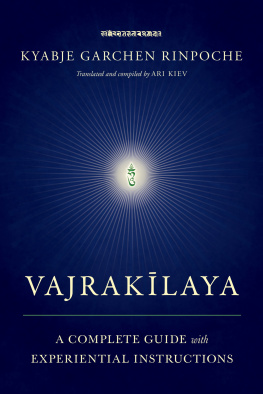
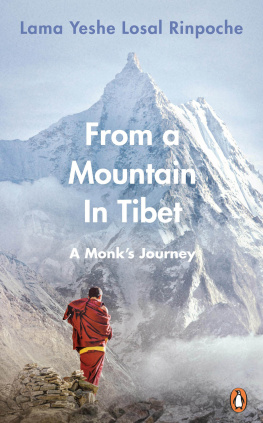

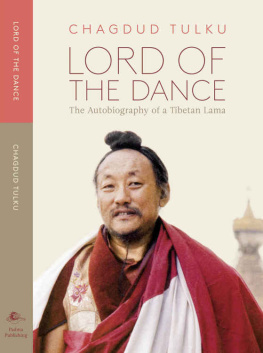
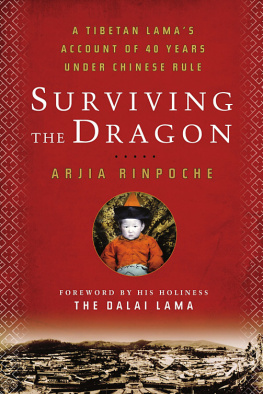

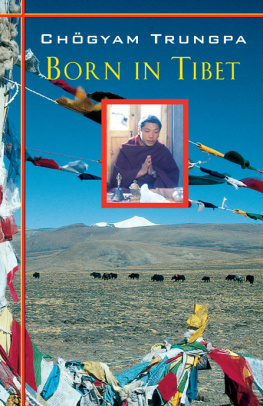

 OF
OF 
